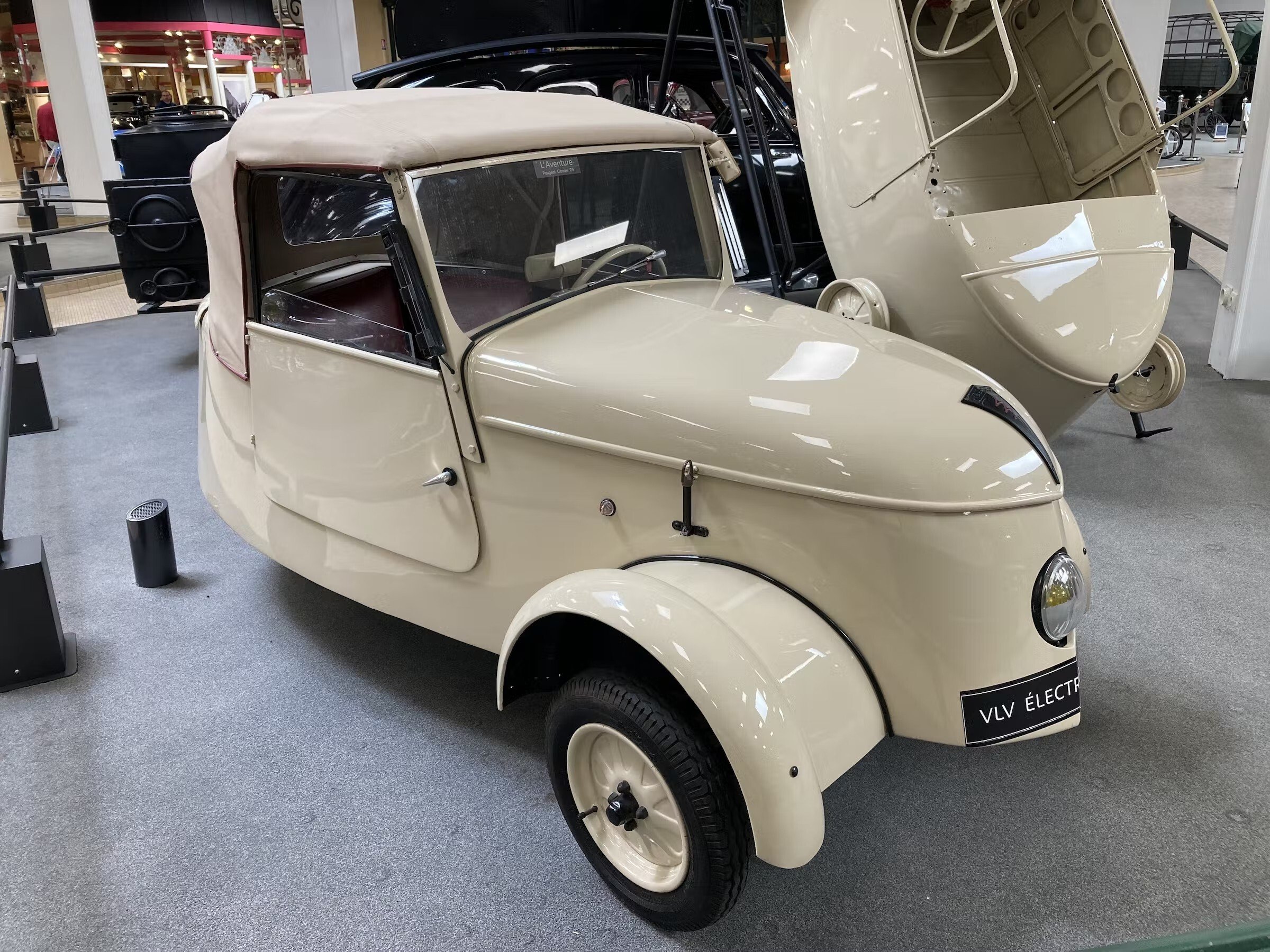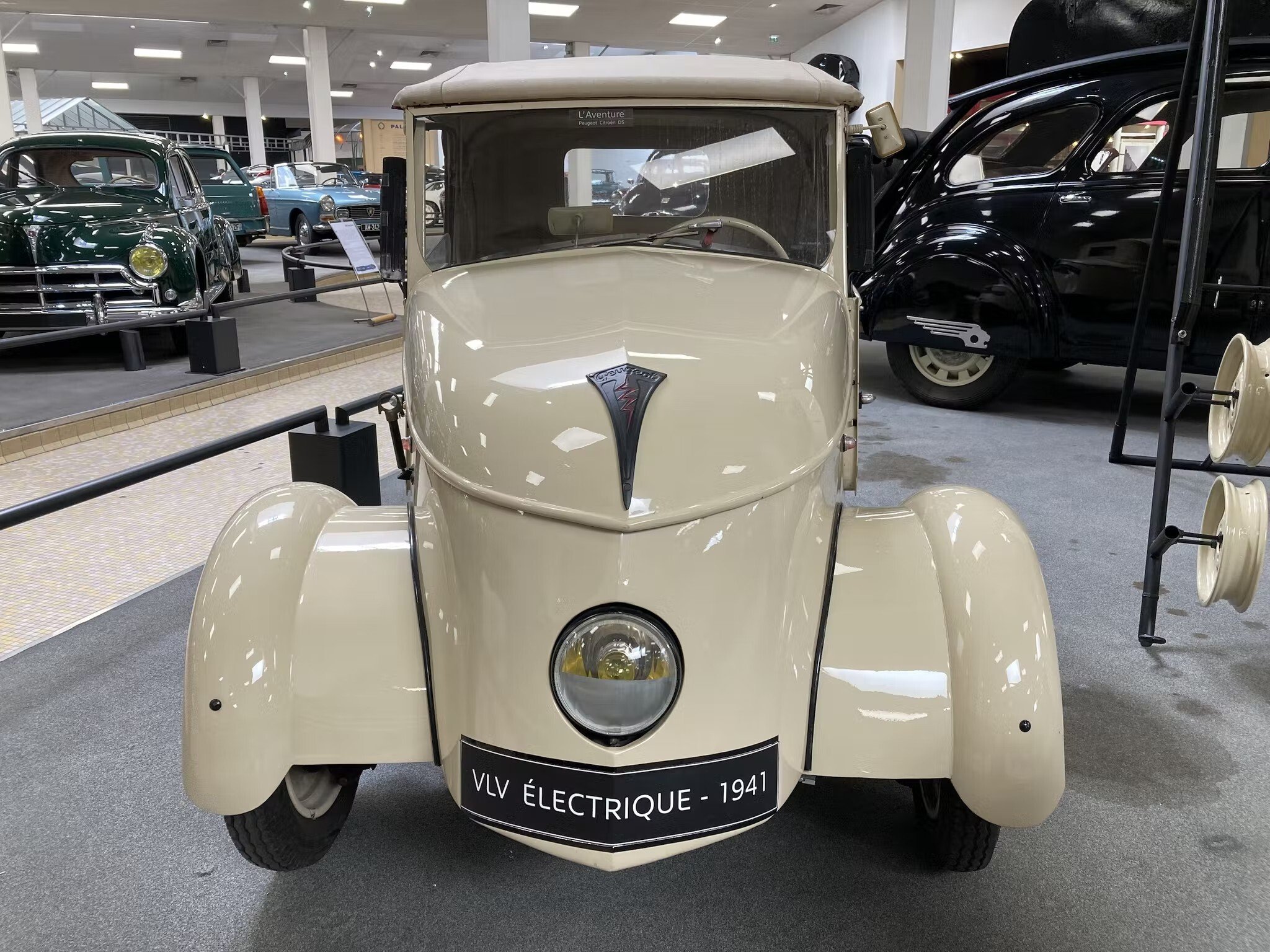The Peugeot VLV was the Twizy of the 1940s
27 May 2022
French car manufacturers have a history of innovation and experimentation the envy of nearly any other car-building nation. Who else can boast cars as diverse as the mechanically genial Citroën 2CV, and the rule-breaking mid-engined Clio V-6?
Renault’s tandem-seat Twizy and the recent Citroën Ami appear to be cut from the same cloth: ultra-lightweight electric vehicles designed to revolutionize city transportation, while minimizing both costs and material usage next to more conventional cars.
Only Peugeot got there before both of them—more than eighty years ago.
Launched in 1941, during the Nazi occupation of France, it was called the Peugeot VLV, for Voiture Légère de Ville or “Light City Car.” While the styling is a product of its time, the idea is still very much in use in the VLV’s modern-day electric equivalents.
The war was, not surprisingly, a time of shortages. Most automotive production was set aside for the war effort, which in France meant Nazi control of its factories. Those who had cars often found them requisitioned by the military, and even those lucky enough to hold onto their pre-war Talbots, Amilcars, and Renaults would struggle to fill them up, with fuel being also heavily rationed.
But even under occupation, life went on. Doctors still needed to get around town, postal workers still needed to deliver their letters. The window of requirements was narrow, but significant; customers needed a car that would not fall foul of limited materials and gas rationing, but also more utility than a bicycle.
The Peugeot VLV was the answer. Powered by a quartet of 12-volt batteries, the electric VLV required no fuel, and its 3.3-horsepower motor—a little less than half that of the modern Citroën Ami—was more than sufficient to push its 767-pound frame (plus your average postman or doctor) around town at a bicycle-beating 20 mph.
More importantly, those modest lead-acid batteries could still deliver 75-80 kilometers of range—about 47-50 miles—covering the daily rounds with range to spare.
Contrary to appearances, the VLV was actually a four-wheeler, with a pair of rear wheels set closer together than those at the front. Material economy was everywhere, from its single headlight, to its single front leaf spring suspension, a solitary brake drum for both rear wheels, and even the roof: its convertible arrangement might seem like a luxury, but it would have simplified construction and required less steel than a fixed roof.
Controls were simple, with a forward and reverse selector on the dashboard, slide-up windows, and a hand crank for the windscreen wiper. It did seat two though, and offered at least some luggage space.
Perhaps indicative that automobiles were still very much a luxury though, Peugeot built only 377 VLVs between 1941 and 1945, before restarting conventional car production in 1946 with the pre-war 202. And in 1949, Citroën delivered the first 2CV—a car that served the bottom end of the market far more comprehensively than a tiny, limited-range electric car ever could.
Today’s low-speed, short-range city cars like the Twizy and Ami have more realistically grown out of Europe’s unique market (and regulations) allowing both the young and those without a license to drive vehicles under a certain weight and power output, while their electric drivetrains are increasingly in demand as fossil fuels fall from favor.
But next time you imagine a future full of charming, tiny electric city cars, remember that it’s actually an idea with its roots in the distant past.
Article Courtesy of Hagerty










